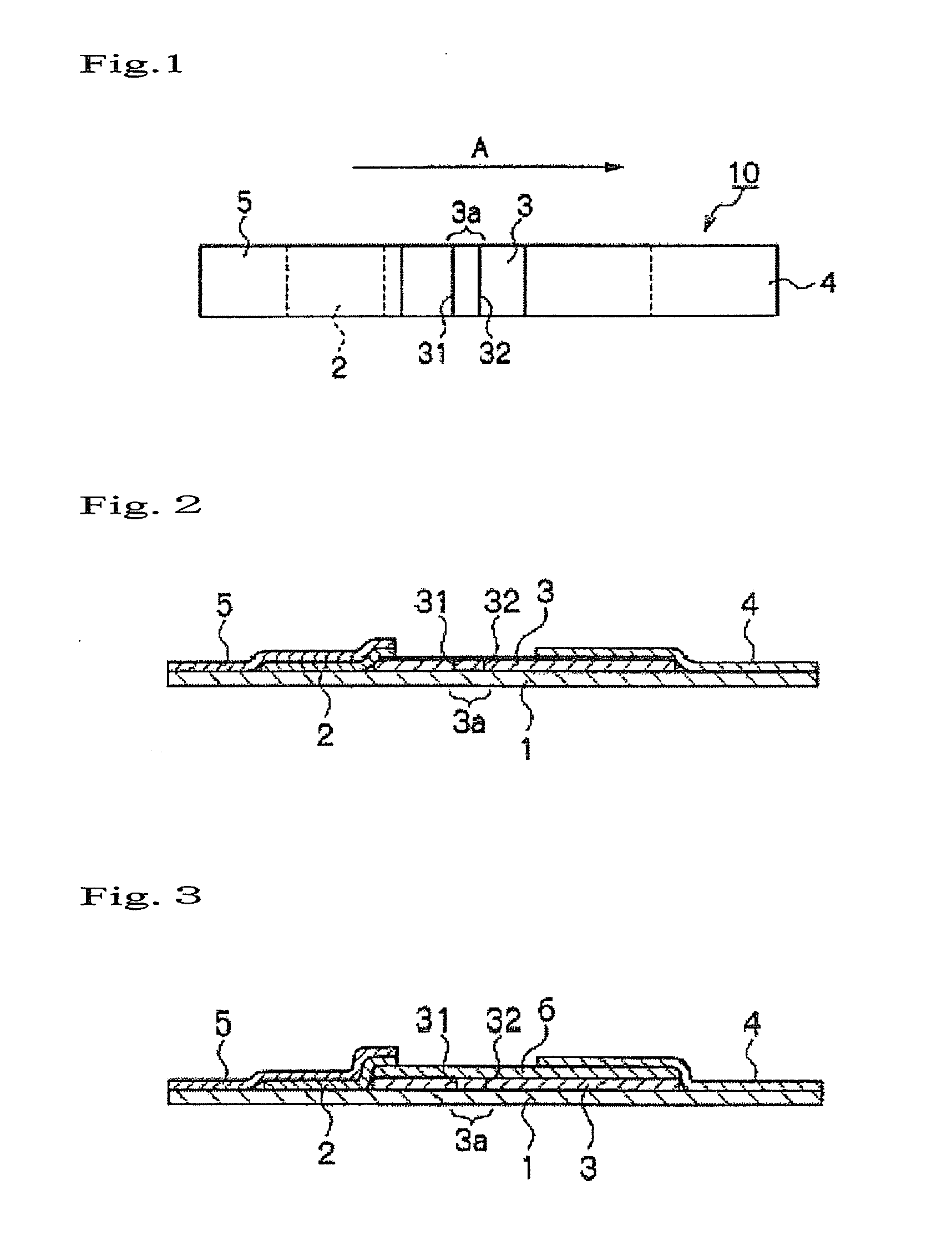Labeled particle obtained by immobilizing a fragmented antibody to a labeling substance
a technology of antibody and labeling substance, applied in the field of labeled particles, can solve the problems of decreased detection sensitivity or increased nonspecific adsorption, and achieve the effects of improving detection sensitivity, reducing nonspecific adsorption, and improving reactivity
- Summary
- Abstract
- Description
- Claims
- Application Information
AI Technical Summary
Benefits of technology
Problems solved by technology
Method used
Image
Examples
example 1
Preparation of Gold Colloid to which Fab′ Antibody was Directly Immobilized Via SH Group
[0138]The thus prepared Fab′ antibody was adjusted to 0.5 mg / mL. 1 mL of the solution was mixed with a 50-nm diameter gold colloidal solution and then a reaction was carried out for 1 hour at room temperature for immobilization. A 1 % polyethylene glycol (PEG Mw.20000) aqueous solution (500 μL) was added to the reaction solution and then the solution was stirred. Subsequently, 1.0 mL of a 10 % bovine serum albumin aqueous solution was added and then the solution was stirred. The solution was centrifuged at 8000×g and 4° C. for 30 minutes. The supernatant was removed so that approximately 1 mL of the solution remained. The gold colloid was dispersed again using an ultrasonic washing machine. Subsequently, the resultant was then dispersed in 20 mL of a gold colloidal stock solution (20 mM Tris-HCl buffer (pH 8.2), 0.05% PEG (Mw. 20000), 150 mM NaCl, 1% BSA, and 0.1% NaN3) and then centrifuged again...
example 2
Preparation of Gold Colloid to which Fab′ Antibody was Immobilized Via SH Group Using PEG Polymer
[0140]9 mL of a 50-nm-diameter gold colloidal solution was mixed with 1 mL of 1 mM Thiol-dPEG4 acid (Product No. QB10247a, Quanta), and then a reaction was carried out at room temperature for 18 hours, in order to treat the surface with PEG. 500 μL of EDC (0.2M) (Product No. E1769, Sigma-Aldrich Corporation) and 500 μL of 0.05 M NHS (Product No. 130672, Aldrich) were added to the reaction solution, and then reaction was carried out at room temperature for 3 hours, so that COOH groups were NHS-esterified. The solution was centrifuged at 8000×g and 25° C. for 15 minutes. The supernatant was removed so that approximately 1 mL of the solution remained and then the gold colloid was dispersed again using an ultrasonic washing machine. Subsequently, the resultant was dispersed in 20 mL of 50 mM KH2PO4 buffer (pH 7.0) and then centrifuged again at 8000×g and 25° C. for 15 minutes. The supernatan...
PUM
| Property | Measurement | Unit |
|---|---|---|
| particle size | aaaaa | aaaaa |
| particle size | aaaaa | aaaaa |
| particle diameter | aaaaa | aaaaa |
Abstract
Description
Claims
Application Information
 Login to View More
Login to View More - R&D
- Intellectual Property
- Life Sciences
- Materials
- Tech Scout
- Unparalleled Data Quality
- Higher Quality Content
- 60% Fewer Hallucinations
Browse by: Latest US Patents, China's latest patents, Technical Efficacy Thesaurus, Application Domain, Technology Topic, Popular Technical Reports.
© 2025 PatSnap. All rights reserved.Legal|Privacy policy|Modern Slavery Act Transparency Statement|Sitemap|About US| Contact US: help@patsnap.com

